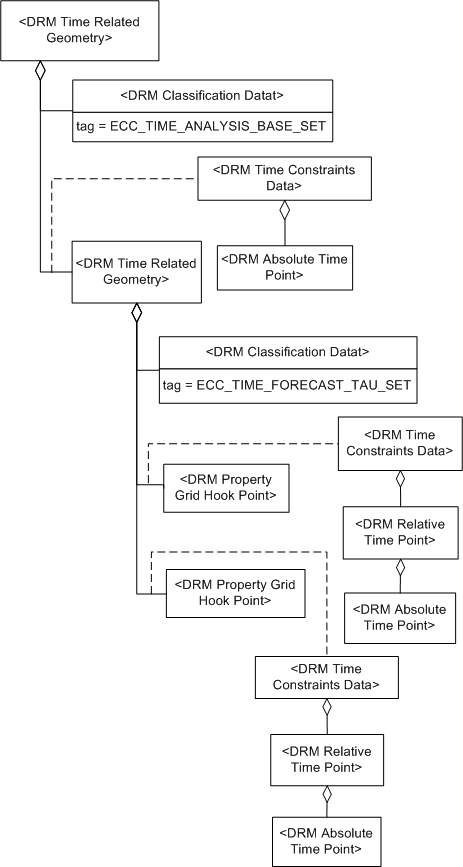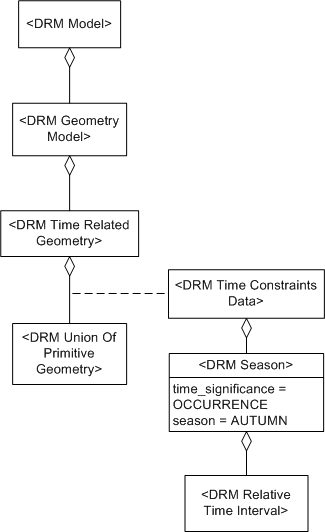Consider atmospheric forecast data organized using nested <Time Related Geometry> instances as depicted in Figure 71:
The <Classification Data> instances specify to what each <Time Related Geometry> instance corresponds. The outer <Time Related Geometry> instance corresponds to base forecast times, while the inner <Time Related Geometry> instance corresponds to forecast taus.
In the forecast world, models are run starting at some base starting time (for example, at 0Z and 12Z). The model then produces forecasts at several deltas after the base starting time (for example, at 6, 12, 18, and 24 hours). These are known as forecast taus.
Consequently, forecast models are run at 0Z and 12Z, and each produces a 24 hour forecast, the following overlap is obtained.
16 Nov 17 Nov 18 Nov
0Z +6 +12 +18 +24
12Z +6 +12 +18 +24
0Z +6 +12 +18 +24
....
To uniquely identify a forecast, the base forecast time and the delta (tau) are required. This is why nested <Time Related Geometry> instances have been used in this example; one <Time Related Geometry> instance defines the base forecast time, while its <Time Related Geometry> component defines the forecast tau.
This approach is needed only if multiple forecasts with overlapping forecasts are included in the transmittal. If instead the analysis (0Z) and +6 forecasts from each forecast are used, the following is obtained.
16 Nov 17 Nov
0Z +6 12Z +6 0Z +6 12Z +6 ...
Consider a <Model> instance representing a deciduous tree. The colour of the leaves of the tree depends on the time of year, or season. Consequently, a data provider to whom this is important organizes a tree <Model> instance using a <Time Related Geometry> instance along the lines depicted in Figure 72. Only the autumn representation of the <Model> instance is shown, but other branches are present for the other seasons.

